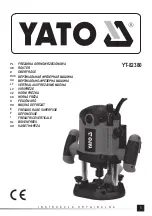
Operating modes and functions
ELSA LANCOM Business
73
Simple and inverse masquerading
This masking operates in both directions: The local network behind the IP address of the
router is masked if a computer from the LAN sends a packet to the Internet (simple
masquerading).
If, on the other hand, a computer sends a packet from the Internet to, for example, an FTP
server on the intranet, from the point of view of this computer the router appears to be
the FTP server. The router knows the intranet address of the server from the entry in the
service table (in
ELSA LANconfig in the 'TCP/IP' configuration section on the 'Masq.' tab
or in the
Setup/IP-router-module/Masquerading/Service-table
menu). The packet is forwarded to this computer. All packets that come from the FTP
server in the local network (answers from the server) are hidden behind the IP address of
the router.
The only small difference is that:
쮿
Access to a service (port) in the intranet from outside must be defined in advance by
specifying a port number. The destination port is specified with the intranet address
of, for example, the FTP server, on a service table to achieve this.
쮿
When accessing the Internet from the intranet, on the other hand, the router itself
makes the entry in the port and IP address information table.
The table concerned can hold up to 2048 entries, that is it allows 2048
simultaneous
transmissions between the masked and the unmasked network.
After a specified period of time, the router, however, assumes that the entry is no
longer required and deletes it automatically from the table.
Which protocols can be transmitted using IP masquerading?
Naturally, only those which also communicate using ports. Protocols working without
port numbers or using ports above IP in the OSI model cannot be masked without special
treatment.
The current version of router implements masquerading for the following protocols:
쮿
FTP
쮿
TCP
쮿
UDP
쮿
ICMP
DNS forwarding
Names rather than IP addresses are generally used to access a server over the Internet.
Who knows which address is behind 'www.domain.com'? The DNS server, of course.
DNS stands for Domain Name Service and refers to the assignment of domain names
(such as domain.com) to the corresponding IP addresses. This information must be
Содержание LANCOM Business LC-4X00
Страница 1: ...Manual ELSA LANCOM TM Business No 20857 0999...
Страница 4: ......
Страница 10: ...Content ELSA LANCOM Business X...
Страница 22: ...Introduction ELSA LANCOM Business 12...
Страница 42: ...Configuration modes ELSA LANCOM Business 32...
Страница 112: ...Operating modes and functions ELSA LANCOM Business 102...
Страница 146: ...Workshop ELSA LANCOM Business 136...
Страница 152: ...Appendix ELSA LANCOM Business 142...
Страница 160: ...Glossary ELSA LANCOM Business 150...
Страница 170: ...Index ELSA LANCOM Business 160...
Страница 259: ...TCP IP ports ELSA LANCOM Business R89 rscsb 10011 udp qmaster 10012 tcp qmaster 10012 udp Capab Port no Protocol...
Страница 260: ...TCP IP ports ELSA LANCOM Business R90...
















































